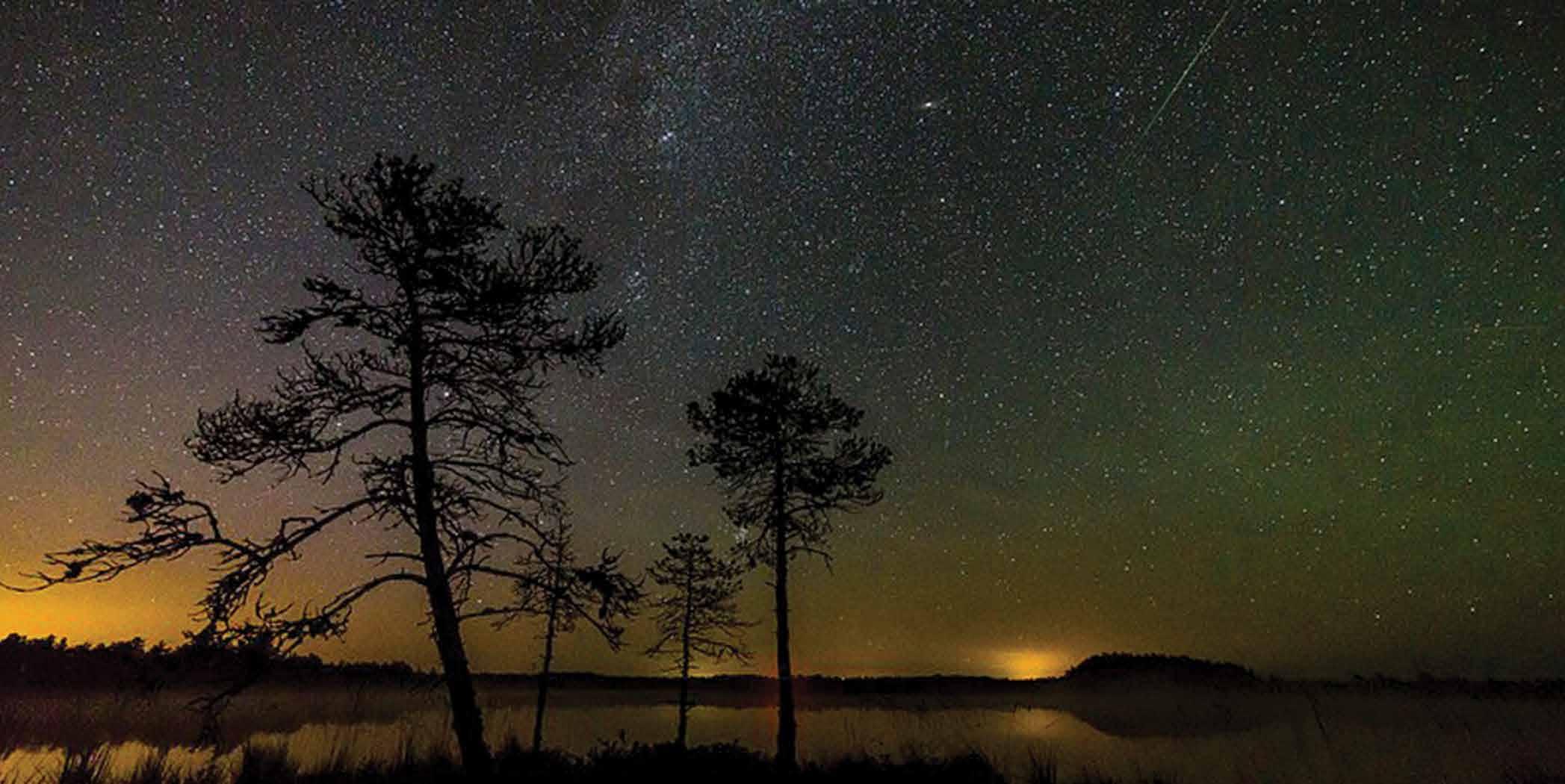
1 minute read
Glossary
by Micki Demby Kleinman
Asterism: A group of stars that form a pattern. A section within a larger constellation.
Cassiopeia: A constellation named after Cassiopeia, a queen in Greek mythology.
Celestial: Relating to heaven, the heavens, the sky, or divinity.
Comet: Hunks of ice and gas streaking through the universe.
Double-wide: Double-wide trailer. Mobile home.
Bear Constellation: Otherwise known as Ursa Major. Ursa Major is Latin for “large bear.”
Big Dipper: Asterism of stars within Ursa Major.
Heart Nebula: Nebulae are clusters of ionized gases and dust in space surrounding a dying star or a new star in the midst of creation. The Heart Nebula is reddish in color and in the shape of a heart. The nebula was discovered in the late 1700s.

Jump School: The United States Army Airborne School, where soldiers learn to jump out of airplanes with parachutes as part of their training.
Little Dipper: Constellation also known as Ursa Minor, Latin for “lesser bear.” Contains Polaris, the North Star.
Meteor: Rocky debris from comets that creates a streak of light when it burns up upon entering Earth’s atmosphere; often called a “shooting star.”
Meteorite: Rocky debris from comets that lands on Earth rather than burning up in the atmosphere.
Perseus: Figure of Greek mythology. Son of Zeus and the mortal Danaë. He beheaded Medusa.
Unorganized Territories: Areas in Maine with no local government. Services and tax responsibility are shared by county and state governments. More than half of Maine’s total land is unorganized; 9,000 people live in the unorganized territories year round, with more seasonally.










